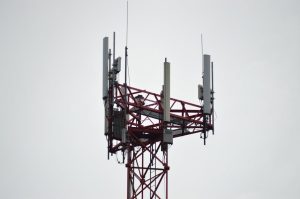
Starlink: Revolutionizing Global Internet Connectivity
Starlink is a satellite constellation developed by SpaceX, a private aerospace manufacturer and space transport services company founded by Elon Musk. The project aims to provide high-speed, low-latency internet connectivity worldwide, especially in areas where traditional internet infrastructure is lacking or non-existent. With its innovative technology and ambitious goals, Starlink is poised to revolutionize the way we access and use the internet.
How Starlink Works
Starlink consists of a network of low-Earth orbit (LEO) satellites, each equipped with advanced communication technology. The satellites are designed to provide internet connectivity to users on the ground, who can access the network using a small, portable terminal. The terminal communicates with the nearest Starlink satellite, which then relays the signal to a network of ground stations, connected to the global internet backbone.
The Starlink system uses a combination of advanced technologies, including phased array antennas, beamforming, and mesh networking, to provide high-speed and low-latency connectivity. The satellites are also equipped with Hall effect thrusters, which allow them to maintain their position and altitude in orbit. With a constellation of thousands of satellites, Starlink can provide continuous coverage of the entire globe, including remote and underserved areas.
Benefits and Features of Starlink
Starlink offers several benefits and features that make it an attractive option for internet users worldwide. Some of the key advantages include:
High-speed connectivity: Starlink provides speeds of up to 1 Gbps, making it suitable for demanding applications such as online gaming, video streaming, and cloud computing.
Low latency: The use of LEO satellites and advanced communication technology enables Starlink to achieve latency as low as 20 ms, comparable to fiber-optic cables.
Global coverage: Starlink can provide internet connectivity to anyone, anywhere in the world, regardless of their location or access to traditional infrastructure.
Portability: The small, portable terminal allows users to take their internet connection with them, making it ideal for remote workers, travelers, and emergency responders.
Impact and Future Developments
Starlink has the potential to revolutionize the way we access and use the internet, especially in areas where traditional infrastructure is lacking. The project could have a significant impact on various industries, including education, healthcare, finance, and entertainment. With its global coverage and high-speed connectivity, Starlink could enable new applications and services, such as:
Remote education and online learning
Telemedicine and remote healthcare services
Financial inclusion and mobile banking
Streaming services and online entertainment
As the project continues to develop and expand, we can expect to see new features and applications emerge, further transforming the way we live, work, and communicate.
Conclusion
Starlink is a groundbreaking project that has the potential to revolutionize global internet connectivity. With its innovative technology, ambitious goals, and commitment to providing high-speed, low-latency connectivity worldwide, Starlink is poised to make a significant impact on the future of telecommunications. As the project continues to evolve and expand, we can expect to see new applications, services, and innovations emerge, transforming the way we access and use the internet.




